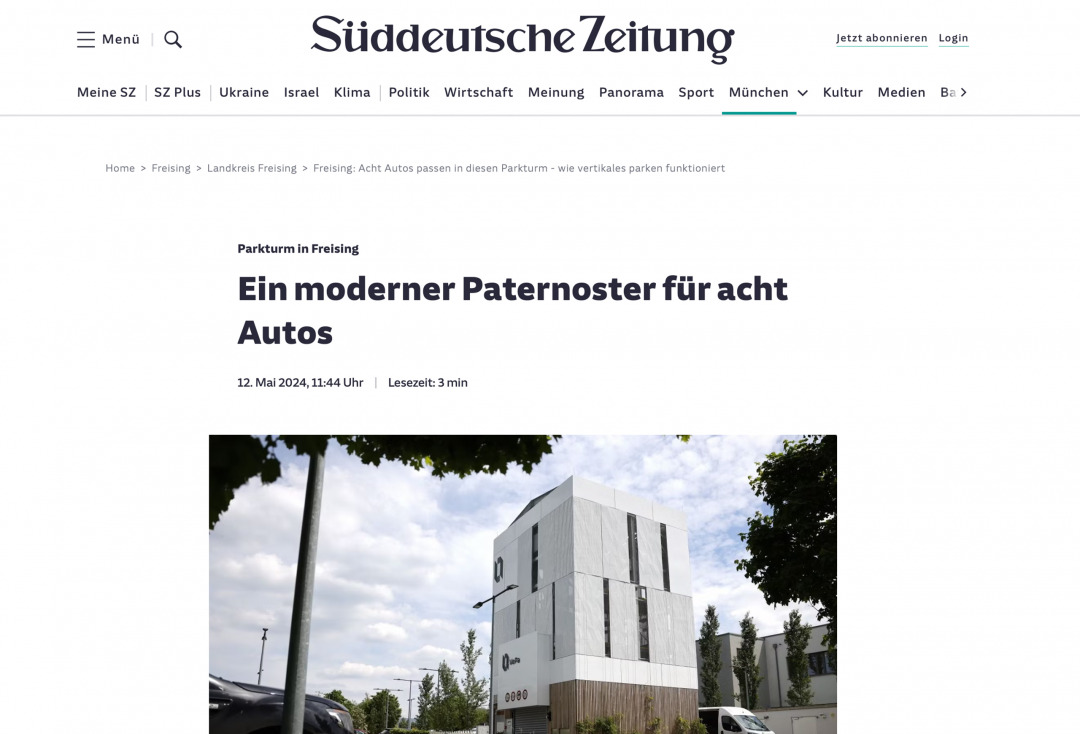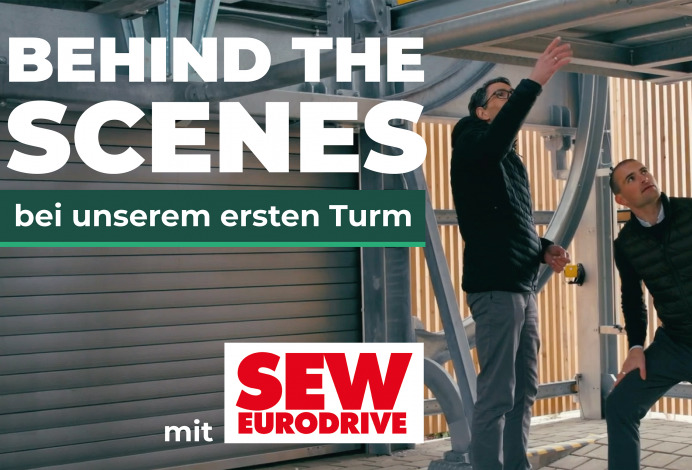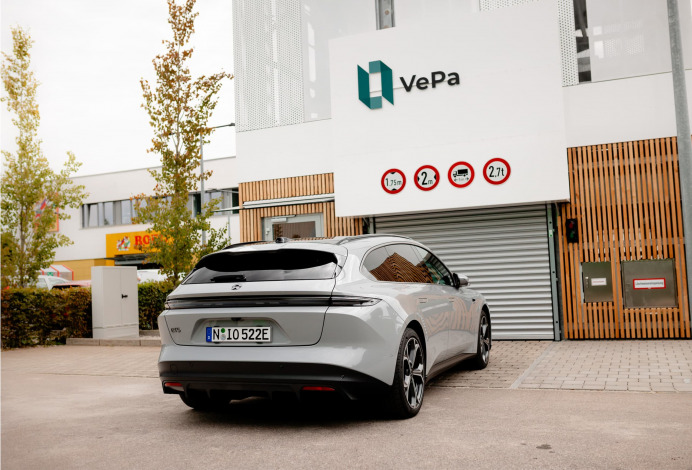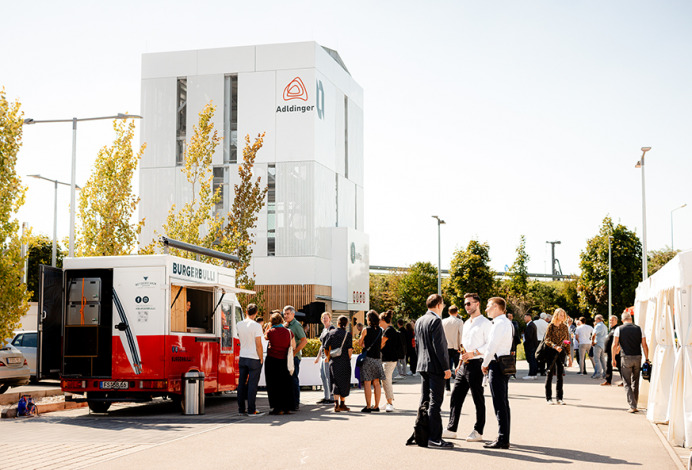VePa <> Süddeutsche Zeitung
Our Simon Schubnell gave an interview about VePa to the Süddeutsche Zeitung and talked about possible scaling and where the next VePa towers are already in the planing. But you are welcome to read for yourself …
A modern paternoster for eight cars
By Moritz Frimberger, Freising
It may even have the potential to become a new landmark for Freising. With the completion of the parking tower last autumn, Lerchenfeld has gained an unusual eye-catcher. The building rises up on Erdinger Straße in the car park between the pet shop Fressnapf and the Rofu toy shop.
The special feature: the technical realisation is modelled on the paternoster lifts that have gone out of fashion, which makes the construction space-saving. As soon as it has been approved by the TÜV, the prototype can be put into operation after several delays, says Simon Schubnell, co-founder of the young Munich-based company Vepa Vertical Parking, which developed the tower.
The idea for the tower came from Simon Schubnell and David Schön, who already knew each other from their previous employment and realised that they harmonised as a duo and worked well together. Schubnell says, “We came across the topic of park towers and decided to hold talks with cities, communities and project developers.”
The car park tower could not only solve the problem that there is less and less parking space, especially in cities. It would also reduce environmentally damaging soil sealing. In areas where space is limited, Schubnell is certain that “the technology of vertical parking will prevail”.
After receiving positive feedback, the two developers took the plunge into self-employment in May 2021. The team has since grown to 13 employees.
The tower offers space for eight vehicles up to SUV size. The vehicles are parked inside on designated platforms. An electric motor drives these and ensures that the platforms can rotate in both directions via a chain like a paternoster lift. If users want to enter the vertical car park, they hold a chip against the tower. A roller shutter then opens, the next free platform moves downwards and the vehicle can be parked. The parking process must then be confirmed from the outside.
The tower is designed for a service life of at least 20 years
Anyone wishing to retrieve their car has to wait a maximum of 90 seconds in front of the closed gate. On average, it only takes half as long for the vehicle to be available again, says Schubnell, “because the control system is programmed so that the tower always looks for the shortest way down”. The cost of maintenance should be kept to a manageable level. Maintenance is only necessary once a year. The tower is designed for a service life of at least 20 years.
The construction company Adldinger was the first investor involved in the start-up. Convinced by the idea, the Kranzberg-based company acquired the prototype and had it erected on its own property. Schubnell speaks of a “closed user group”; only tenants of the Adldinger company can use the parking spaces. This is set to change with Vepa’s next project: There are plans to build a second car park tower in Munich’s Werksviertel district, which will be open to the public. The company not only wants to be active in development, but also as an operator.
In future, it will be possible to book via app
Improved technology is also to be used in future towers. For example, charging facilities for electric vehicles are planned. According to Schubnell, the complex development of this structure was particularly challenging and the start-up has also filed a patent for it. In the future, it will also be possible to enter the car park using automatic number plate recognition or prior booking via an app.
Thanks to their modular design, the car park towers “can be built in different versions and with different numbers of parking spaces,” says Schubnell. In addition to the Freising version with eight spaces, towers with ten or twelve parking spaces can also be realised. In the longer term, car park towers are also to be built in other parts of Germany, including Berlin. When asked about the biggest challenge, the Co-Managing Director says that “we have to unite two worlds”: The construction of the park tower as a building on the one hand and as a machine on the other is linked to a large number of legal requirements.
You can find the full online article here! (German)



